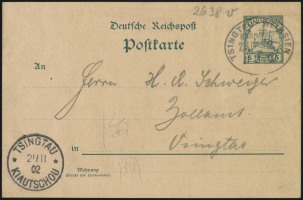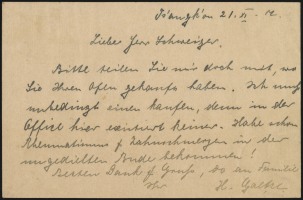Tsingtau-Weihsien Bahnpost
In November 1897, two German missionaries were murdered by a mob in Shantung Province, China. In response, German naval forces occupied the port city of Tsingtau, and the German government used the occupation to press the Chinese government for a long-term lease of the port and the surrounding area. In March 1898, Germany and China entered into a 99-year lease under which Germany would control both sides of the entrance to Kiautschou Bay, as well as the islands within. Around this leased territory would be a small neutral zone which would, in effect, also be under German control.
In 1901, Germany began construction of the Shantung Railway running from Tsingtau to Tsinanfu, China. The railway was opened in four stages, with new cancellers introduced for use as the railway expanded at each stage.
The third section, from Kaumi to Weihsien, was opened on 1 June 1902. Two trains were used, with a canceller assigned to each train. These cancellers would be removed from service shortly after the fourth and final section of the railway opened, being replaced by “Tsingtau-Tsinanfu Bahnpost” cancellers.
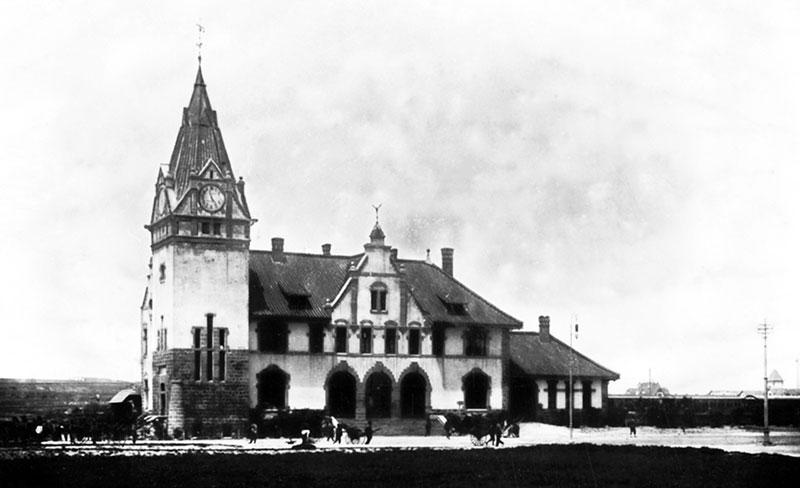
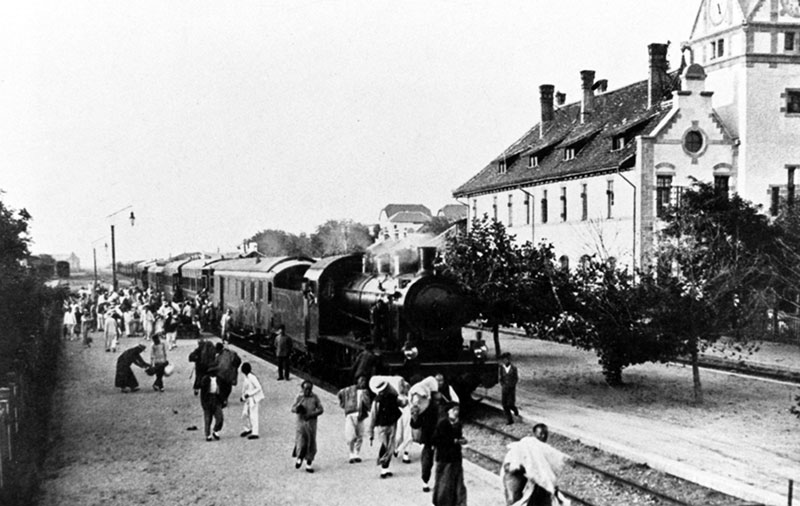
Tsingtau Bahnhof
Postmark Information
Catalog:
- Friedemann BP 3 I
- ArGe Kolonien TSINGTAU-WEIHSIEN BAHNPOST ZUG 1
Dates of Use:
- 2 June 1902 to 1 November 1904
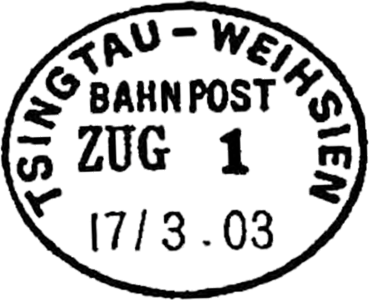
Postmark Information
Catalog:
- Friedemann BP 3 II
- ArGe Kolonien TSINGTAU-WEIHSIEN BAHNPOST ZUG 2
Dates of Use:
- 2 June 1902 to 1 November 1904
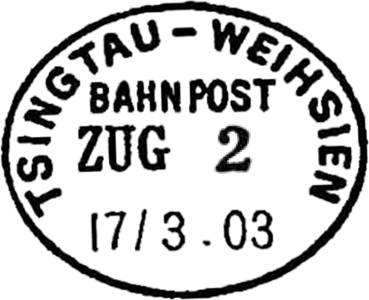
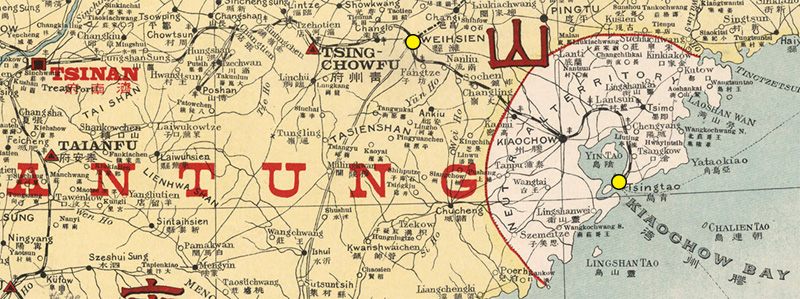
Tsingtau-Weihsien Bahnpost
In November 1897, two German missionaries were murdered by a mob in Shantung Province, China. In response, German naval forces occupied the port city of Tsingtau, and the German government used the occupation to press the Chinese government for a long-term lease of the port and the surrounding area. In March 1898, Germany and China entered into a 99-year lease under which Germany would control both sides of the entrance to Kiautschou Bay, as well as the islands within. Around this leased territory would be a small neutral zone which would, in effect, also be under German control.
In 1901, Germany began construction of the Shantung Railway running from Tsingtau to Tsinanfu, China. The railway was opened in four stages, with new cancellers introduced for use as the railway expanded at each stage.
The third section, from Kaumi to Weihsien, was opened on 1 June 1902. Two trains were used, with a canceller assigned to each train. These cancellers would be removed from service shortly after the fourth and final section of the railway opened, being replaced by “Tsingtau-Tsinanfu Bahnpost” cancellers.

Postmark Information
Catalog:
- Friedemann BP 3 I
- ArGe Kolonien TSINGTAU-WEIHSIEN BAHNPOST ZUG 1
Dates of Use:
- 2 June 1902 to 1 November 1904

Postmark Information
Catalog:
- Friedemann BP 3 II
- ArGe Kolonien TSINGTAU-WEIHSIEN BAHNPOST ZUG 2
Dates of Use:
- 2 June 1902 to 1 November 1904
Album Page(s)

